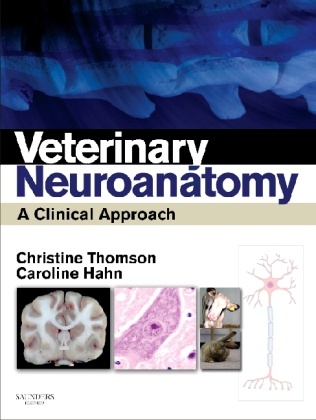Read more
Klappentext Veterinary Neuroanatomy: A Clinical Approach is written by veterinary neurologists for anyone with an interest in the functional, applied anatomy and clinical dysfunction of the nervous system in animals, especially when of veterinary significance. It offers a user-friendly approach, providing the principal elements that students and clinicians need to understand and interpret the results of the neurological examination. Clinical cases are used to illustrate key concepts throughout. The book begins with an overview of the anatomical arrangement of the nervous system, basic embryological development, microscopic anatomy and physiology. These introductory chapters are followed by an innovative, hierarchical approach to understanding the overall function of the nervous system. The applied anatomy of posture and movement, including the vestibular system and cerebellum, is comprehensively described and illustrated by examples of both function and dysfunction. The cranial nerves and elimination systems as well as behaviour, arousal and emotion are discussed. The final chapter addresses how to perform and interpret the neurological examinationSuitable for those with an interest in the functional, applied anatomy and clinical dysfunction of the nervous system in animals, this title offers an overview of the anatomical arrangement of the nervous system, basic embryological development, microscopic anatomy and physiology. Inhaltsverzeichnis Regional neuroanatomy. Neuroembryology. Neurohistology, physiology and supporting structures. Hierarchical organization in the nervous system. Reflexes and motor systems. Ascending somatic sensory tracts and conscious sensory systems. The cerebellum. Vestibular system. Posture and movement in quadrupeds. Cranial nerves. Behaviour, emotion and arousal. The autonomic nervous system. The neurological examination and lesion localisation.
List of contents
Regional neuroanatomy. Neuroembryology. Neurohistology, physiology and supporting structures. Hierarchical organization in the nervous system. Reflexes and motor systems. Ascending somatic sensory tracts and conscious sensory systems. The cerebellum. Vestibular system. Posture and movement in quadrupeds. Cranial nerves. Behaviour, emotion and arousal. The autonomic nervous system. The neurological examination and lesion localisation.
Report
"Recently several good books on veterinary neurology have been published. However, these are essentially clinical accounts with just a brief description of comparative neuroanatomy. This book helps to fill some of the gaps with a good attempt to show the important relationship between neuroanatomy and clinical neurology...Each chapter is illustrated by very helpful coloured line drawings and photographs. Each section is summarised by a table of Key Points which give a helpful summary of the text...This book is reasonably priced and certainly worth purchasing by any veterinarian with a substantial caseload of neurological patients.
December 2013, EJCAP
This is an enjoyable and informative book...I enjoyed reading this book and found it very illumainating on a subject I already feel I know reasonably well... each section contained a fresh perspective or new information that enhanced my understanding of functional neuroanatomy. This combined with the novel approach to the subject, means that I would strongly recommend it to anyone with an interest in the subject, but particularly those who have found the existing teaching or publications difficult to understand."
April 2014, Veterinary Record

